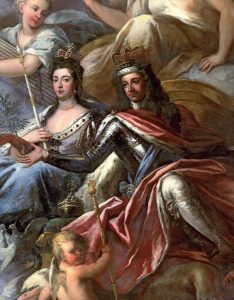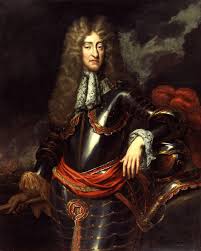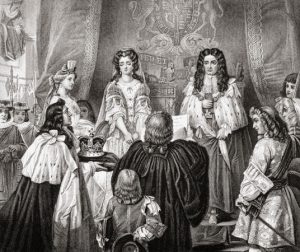The Glorious Revolution was also called the Revolution of 1688. this incident occurred between 1688 and 1689 in England. This revolution took place because of both political and religious reasons.
One of the aftermaths of this movement was that the parliament was given more power over the monarchy and there was an introduction to political democracy.
Bloodless Revolution
Also called the “Bloodless Revolution”, this movement occurred in order to oust James II, the Catholic King. It was arranged for his Protestant daughter, Mary, and her Dutch husband William to take his place. The term ‘Glorious Revolution’ was coined by John Hampden in 1689.
In 1685, King James took over the throne of England. He was a Catholic king and this added to the already existing tensions between the Protestants and the Catholics in the kingdom. The monarchy and the British Parliament did not see eye to eye and there was considerable tension between the two governing bodies.

One of the main problems during King James’ reign was that he is Catholic, supported the freedom of worship for the Catholics and favored the Catholics for appointments in the army or his court. Another reason for King James’ ousting was his relationship with France.
Glorious Revolution: The Beginning
This bothered the people of England. King James II continued favoring the Catholics by suspending laws against the Catholics, giving incentives to Protestants who dissent from their religion. He also dissolved the parliament and attempt to create one which would unconditionally support him.
King James’ main opposition was his daughter, his heir and also a Protestant. However, this changed when the King had a son in 1688, who he proclaimed would be raised a Catholic. The birth of the boy also changed the line of succession, putting Mary down one position.
Many feared that if the king’s son became the ruler, the Catholic dynasty would be undefeated. One of the main opposing groups was the Whigs.
William of Orange
In 1688, representatives of King James II wrote to William of Orange asking him to pledge his alliance with the King of England. The Dutch leader had already planned to attack England and used this letter as a propaganda strategy.
William landed in Devon in November of 1688. He met the King’s army who had already left London in preparation for the attacks. Several of King James’ men including his own family members defected to William’s side.

This song with the King’s deteriorating health led to him making a few changes for his convenience and to keep him safe from inside and outside attacks.
After retreating from the war, King James agreed to a free parliament. However, he was making plans to flee the country for his safety. He tried to run away once in December but was captured. Then he was successful the second time and left the country.
The Aftermath
After King James II fled the country in December of 1688, a Convention Parliament met in January 1689. They declared William of Orange as the King after pressure from his side and King James’ daughter, Mary was the Queen. It was a joint monarchy.

The parliament which had more powers than before placed a lot of rules and restrictions on the two rulers and they had no choice but to accept it. The new king and queen signed the Declaration of Rights which later became known as the Bill of Rights.
This mentioned the several constitutional rules and regulations. This Bill included the right for regular parliament, free elections, and Freedom of Speech. It also forbade the monarchy from being Catholic. This was the first step towards a constitutional monarchy. After the revolution, the parliament’s influence and power over the monarchy only increased.
Why was it Called a Bloodless Revolution?
The Glorious Revolution was also called the Bloodless revolution because of the lack of bloodshed and violence. However, some historians feel that this name is not apt for this incident because there were some bloodshed and violence.
More Info On- Famous Victorian Portraits, Comparison of the Victorian era with Elizabethan Era, Glorious Twelfth